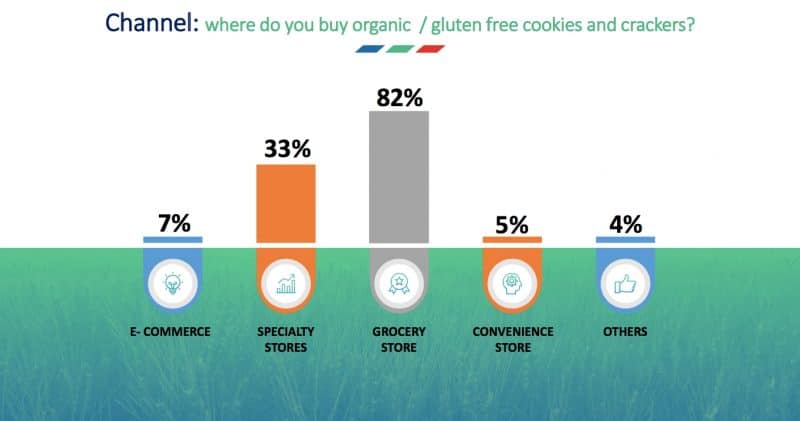You Are HOW You Eat
HOW DO YOU EAT?
Consumers make decisions every day on what products they want to purchase. Obviously, these decisions are influenced by factors like price and brand recognition, but purchasing patterns are also shaped by consumption habits. Buyers of gluten-free food products are no exception, and it is important for industry professionals to understand not only what food products their potential customers buy, but also how they eat them! Through a 2017 consumer survey, Germinal Organic (partnering with Qualtrics) sought to collect information on how frequently consumers buy gluten-free products and how they fit those products into their diets.

THE NUMBERS
Let’s start with a quick over view of the numbers. The results indicate that over 40% of consumers eat gluten-free products as a snack throughout the day, while 27% enjoy them as a side or dessert with lunch or dinner. Over 50% of consumers eat gluten-free food products at least once per day, with 21% stating they eat gluten-free products multiple times daily. Interestingly, only 14% of respondents stated they eat gluten-free products at breakfast. Also, there is a substantial share of consumers (28%) that enjoy gluten-free food products less frequently, about once per week.
CAN YOU SPOT THE DIFFERENCE?
Marketers and manufactures must understand the consumers they are targeting in order to develop sales and marketing strategies that allow them to best communicate with potential customers. While gluten-free foods are slightly more popular amongst women than men, neither gender nor age is the defining characteristic by which consumers can be broken down into segments. Instead, it is more useful to separate consumers in to heavy users who eat gluten-free products at least once per day, most often as a snack, and occasional users who add gluten-free products to their diet as a side or as a breakfast food.

LOCATION, LOCATION, LOCATION
It is important to understand where consumers go to purchase gluten-free cookies and crackers in order to understand in which channels to focus sales and marketing efforts. It is no surprise that 82% of consumers buy their organic or gluten-free food products from grocery stores, but it is still essential to recognize other options in the market place. In particular, 33% of respondents recorded shopping at specialty stores, which should certainly be incorporated in any sales strategy. Surprisingly, e-commerce channels came in at only 7%. However, the general industry consensus is that with services like Amazon Fresh growing year after year, it makes sense for manufactures to get ahead of what will undoubtedly become a main sales channel in the years to come.
WHAT IS YOUR STRATEGY?
Ultimately, the results show that manufacturers should be marketing more to a gluten-free lifestyle—heavy vs occasional consumers—rather than to a specific demographic. It also shows that although most consumers buy gluten-free and organic foods at grocery stores, it is important to distribute products across different channels—in particular, specialty and e-commerce—to gain and retain brand awareness in the market place and meet different customer needs..
Stay tuned and follow Germinal Organic on LinkedIn for more consumer and industry insights.
